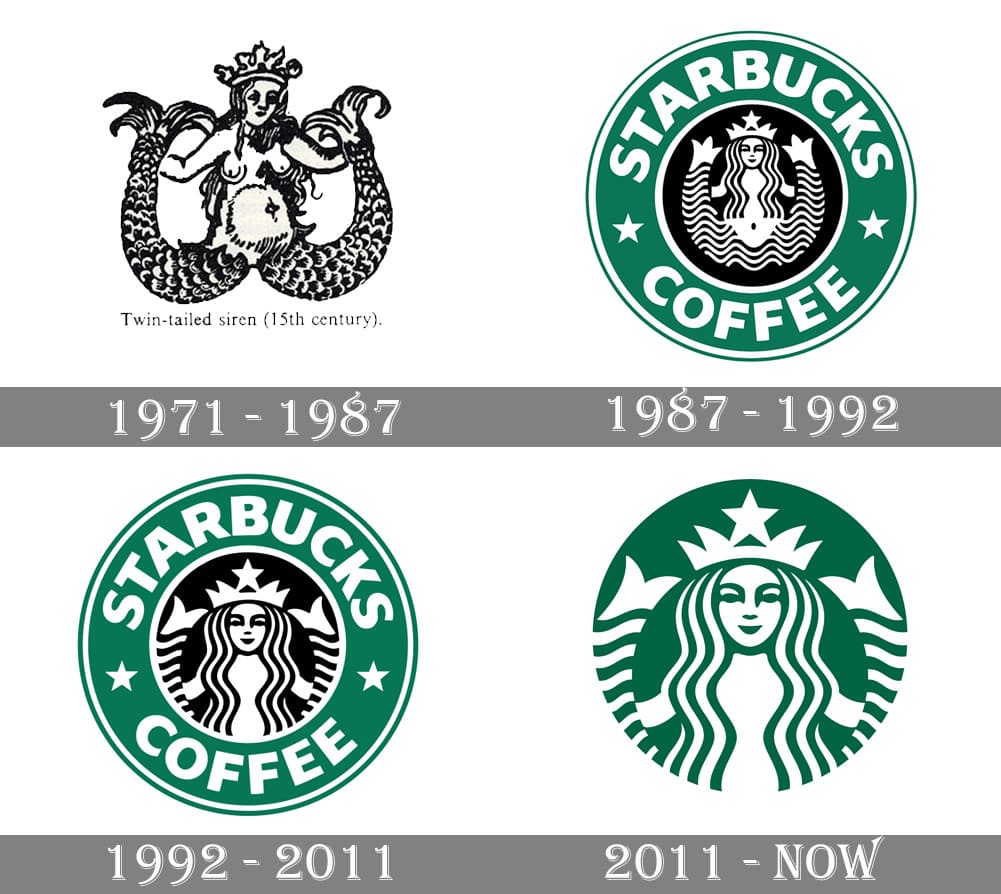The Meaning Behind the Starbucks Logo

For over 50 years, the Starbucks logo has been one of the most recognizable and iconic symbols in the world. It is not just a brand logo; it is an emblem of the global coffee culture, a reflection of Starbucks’ deep connection with its roots, and an expression of the company’s values. The Starbucks logo, featuring a twin-tailed mermaid, has gone through various transformations since its inception, but its underlying meaning remains grounded in themes of mystery, allure, and the brand’s maritime heritage. In this article, we will explore the meaning behind the Starbucks logo, its evolution over the years, and the symbolism that makes it a unique and memorable symbol.
The Origins of Starbucks
Before delving into the symbolism of the Starbucks logo, it is important to understand the origins of the company itself. Founded in 1971 in Seattle, Washington, by three entrepreneurs—Gordon Bowker, Jerry Baldwin, and Zev Siegl—Starbucks initially operated as a small coffee bean roasting company. It was inspired by the rich history of coffee trading and the maritime routes that were essential to the distribution of coffee beans during the 15th and 16th centuries.
The name “Starbucks” was chosen as a tribute to the sea. It was derived from the first mate of the Pequod, a ship in Herman Melville’s famous novel, Moby-Dick. The connection to the sea was meant to evoke images of adventure, mystery, and global exploration—ideas that were inextricably tied to the global coffee trade. The logo, which later became so synonymous with the brand, reflected this maritime inspiration.
The Two-Tailed Mermaid: Symbolism and Meaning
At the heart of the Starbucks logo is a two-tailed mermaid, or siren. This figure is rich with symbolism and plays a central role in the brand’s visual identity. The siren, known for luring sailors with her enchanting songs, has roots in ancient mythology. The two-tailed mermaid symbolizes mystery, allure, and temptation, echoing the irresistible allure of coffee itself. Just as sailors were drawn to the siren’s call, coffee drinkers are drawn to the rich, inviting aroma and taste of Starbucks coffee.
The use of the mermaid also ties directly into Starbucks’ commitment to offering a unique and captivating experience for its customers. The siren represents the brand’s ability to draw people in and create a space that is both welcoming and intriguing. Over time, this mythological figure has come to represent the company’s ability to create not just a product but an experience—a place where people come together over coffee, conversation, and community.
The Circular Design: Unity and Community
The circular shape of the Starbucks logo further enhances its symbolism. A circle is a universal symbol of unity, wholeness, and continuity. For Starbucks, this shape is a representation of the sense of belonging and inclusiveness the company aims to foster within its stores. The logo’s circular design reflects the company’s commitment to building relationships with customers, employees, and communities. It suggests that Starbucks is not just a place to get coffee but a space for connection, conversation, and shared experiences.
The round shape also conveys the idea of perfection and completeness. This subtle design choice signals Starbucks’ attention to detail and its focus on delivering high-quality coffee and service. It implies that the experience of drinking Starbucks coffee is well-rounded, satisfying, and fulfilling.
The Evolution of the Starbucks Logo
The Starbucks logo has undergone several transformations since its inception in 1971. These changes reflect the company’s growth, evolution, and its changing approach to branding and marketing. Let’s take a look at how the logo has evolved over the years.
The First Logo (1971-1987)
The original Starbucks logo was much more detailed than the one we recognize today. The design featured a fully illustrated mermaid with two visible tails, encircled by the words “Starbucks Coffee, Tea, Spices.” The logo was heavily inspired by the nautical theme and referenced the historical use of sea trade routes for coffee distribution. The siren’s seductive pose, with her hair flowing and her breasts exposed, was meant to evoke the allure of the sea and the exotic origins of coffee. This version of the logo was rich in detail and conveyed a sense of adventure and mystery.
The Second Logo (1987-1992)
In 1987, Starbucks was purchased by Howard Schultz, who helped transform the company into the global coffeehouse chain we know today. As part of this transformation, the logo underwent a slight redesign. The word “Coffee” was removed from the logo, signaling Starbucks’ expansion beyond just coffee beans to include brewed coffee, tea, and other beverages. The mermaid remained the focal point of the design, but her nudity was softened, and her hair was given more prominence. The color scheme shifted from a darker palette to green, symbolizing growth and sustainability.
The Third Logo (1992-2011)
The next major redesign of the Starbucks logo occurred in 1992, marking a significant shift in the company’s identity. This version of the logo featured a much cleaner and simpler design. The intricate details of the mermaid were removed, leaving only a more stylized, less sexualized version of the siren. The logo became more modern, with a focus on the image of the mermaid rather than the text. The green color became more prominent, symbolizing Starbucks’ growing commitment to environmental sustainability.
The Fourth Logo (2011-Present)
In 2011, Starbucks made its boldest move yet by dropping the text entirely from its logo. The siren, now the sole element of the logo, was given even more prominence. The design was simplified further, resulting in a more minimalist and streamlined look. The green color remained central, continuing to convey a sense of vitality and growth. This version of the logo reflects Starbucks’ evolution into a global coffee brand that is now recognized worldwide, no longer needing to rely on words to establish its identity.
The decision to remove the text and focus solely on the siren was a reflection of the brand’s global presence and the recognition that the logo itself was strong enough to stand alone. It also marked a shift toward a more modern, simplified aesthetic, aligning with contemporary design trends and appealing to a younger, more design-conscious audience.
The Symbolism of Green: Growth, Sustainability, and Renewal
One of the most distinctive elements of the Starbucks logo is the use of green. Green has long been associated with growth, renewal, and nature. For Starbucks, the color green has multiple layers of meaning. On one level, it reflects the company’s commitment to environmental sustainability. Starbucks has long been at the forefront of sustainability efforts in the coffee industry, working to ensure that its coffee is ethically sourced and that its environmental footprint is minimized.
On another level, green represents Starbucks’ desire for growth and innovation. The company has consistently evolved and adapted to meet the changing needs of its customers. The green color serves as a reminder of the brand’s constant drive for improvement, whether in its product offerings, its customer service, or its community initiatives.
Conclusion: The Power of the Starbucks Logo
The Starbucks logo is more than just a visual symbol; it is a representation of the company’s values, history, and commitment to providing a unique customer experience. The two-tailed mermaid, with her mythical allure, evokes the mystery and enchantment of the coffee trade, while the circular design communicates unity, inclusiveness, and continuity. The evolution of the logo over the years reflects the company’s growth from a small coffee bean roaster to a global coffeehouse chain, and its constant drive for innovation.
As Starbucks continues to expand globally, the logo remains a powerful and recognizable symbol of the brand’s mission to inspire and nurture the human spirit—one person, one cup, and one neighborhood at a time. The siren’s call is not just about coffee; it’s about community, connection, and the shared experience of enjoying a cup of coffee in a space that feels like home. Whether you’re sipping a latte in Seattle or a cappuccino in Tokyo, the Starbucks logo is a reminder of the brand’s deep roots, its enduring values, and its commitment to creating a welcoming environment for all.

